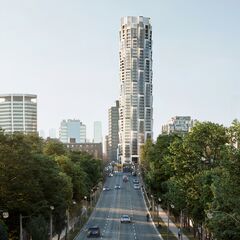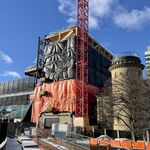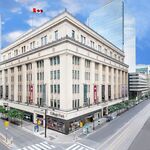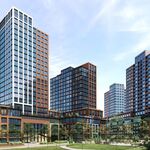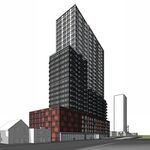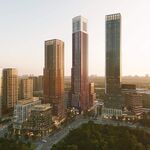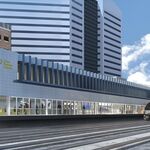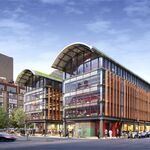Over 200 people packed the room at a community consultation Thursday evening to get their first glimpse of Slate Asset Management's One Delisle, a proposed mixed-use residential tower that represents the first project in Canada for Chicago-based powerhouse firm Studio Gang. With Jeanne Gang herself addressing the crowd, the landmark status of the project was clear: having underestimated the attendance at the meeting, the event was standing room only with a palpable atmosphere of excitement and curiosity, and organizers quickly ran out of white wine.
The building is unlike anything yet seen in Toronto, which is to be expected from Studio Gang. Rising 48 storeys at the southwest corner of Yonge and Delisle Avenue, the tower is composed of 8-storey-high elongated hexagonal modules pieced together in a honeycomb pattern. A two-storey base creates a human scale at the sidewalk level, while above, the tower's shape morphs from a square base to a 16-sided rounded peak. UrbanToronto had a chance to sit down with Jeanne Gang to discuss the design of what could become Toronto's next iconic landmark.
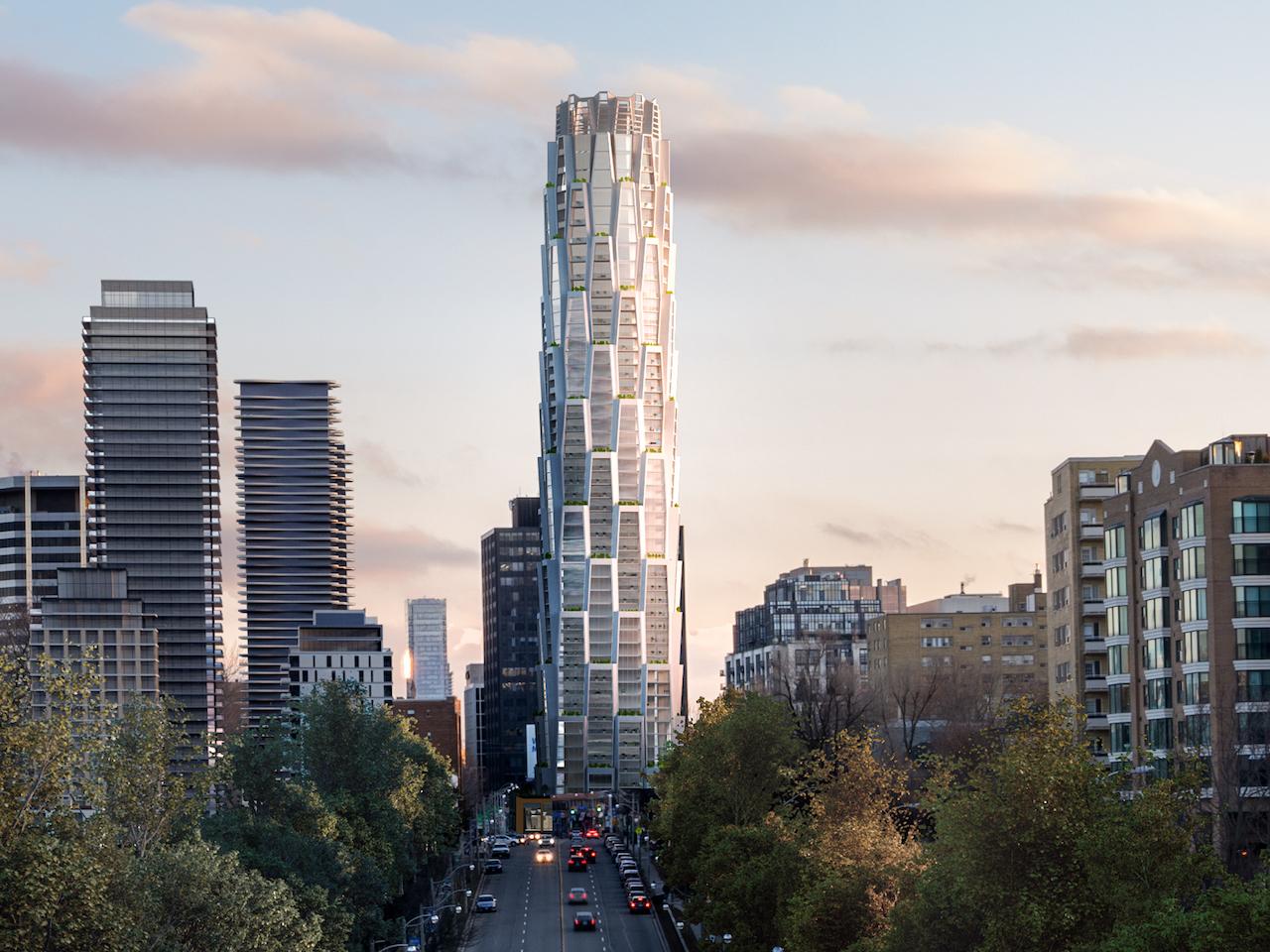 Rendering looking south at One Delisle, image courtesy of Slate Asset Management.
Rendering looking south at One Delisle, image courtesy of Slate Asset Management.
One Delisle will be the first building to be constructed by Slate from the ground up at Yonge and St. Clair, where they own a total of 10 properties clustered around the intersection, including the structures on all four corners. Having acquired so much property in the area, Slate have their eyes on a wider, more comprehensive vision for the neighbourhood, which is exactly what drew Gang north of the border. "We were attracted to the project because of the fact that Slate owned a number of properties around here," Gang explained, "so it wasn't just one project. We could actually think outside of those boundaries and think about what this part of the city could be like."
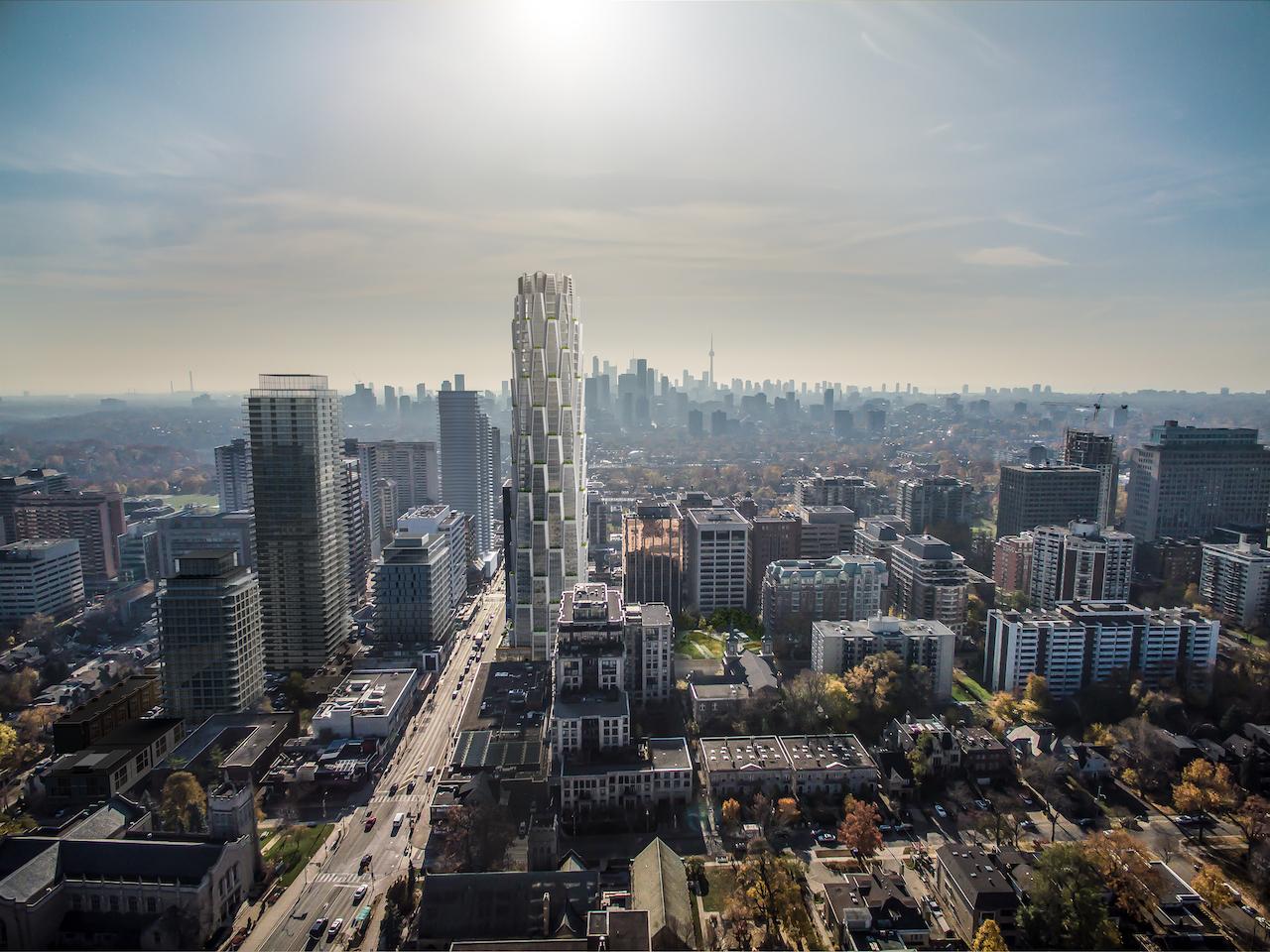 Rendering looking south toward One Delisle, image courtesy of Slate Asset Management.
Rendering looking south toward One Delisle, image courtesy of Slate Asset Management.
This grander vision and the interactions with neighbouring structures informed several aspects of the building. Much detail went into the design of the base, which responds to the 2-storey datum line of the storefront buildings along Yonge Street. The historic facade of one building will be retained, but will be pushed back a full 3.5 metres to create a wider 7-metre sidewalk along Yonge Street. The remainder of the base is designed with a human scale in mind, maintaining the 2-storey height and pulling back further from Delisle Avenue to create an 8-metre-wide sidewalk. The pedestrian environment and human scale are important components of Slate's ambitious plans to improve the streetscape around Yonge and St. Clair in order to create a more inviting and walkable neighbourhood.
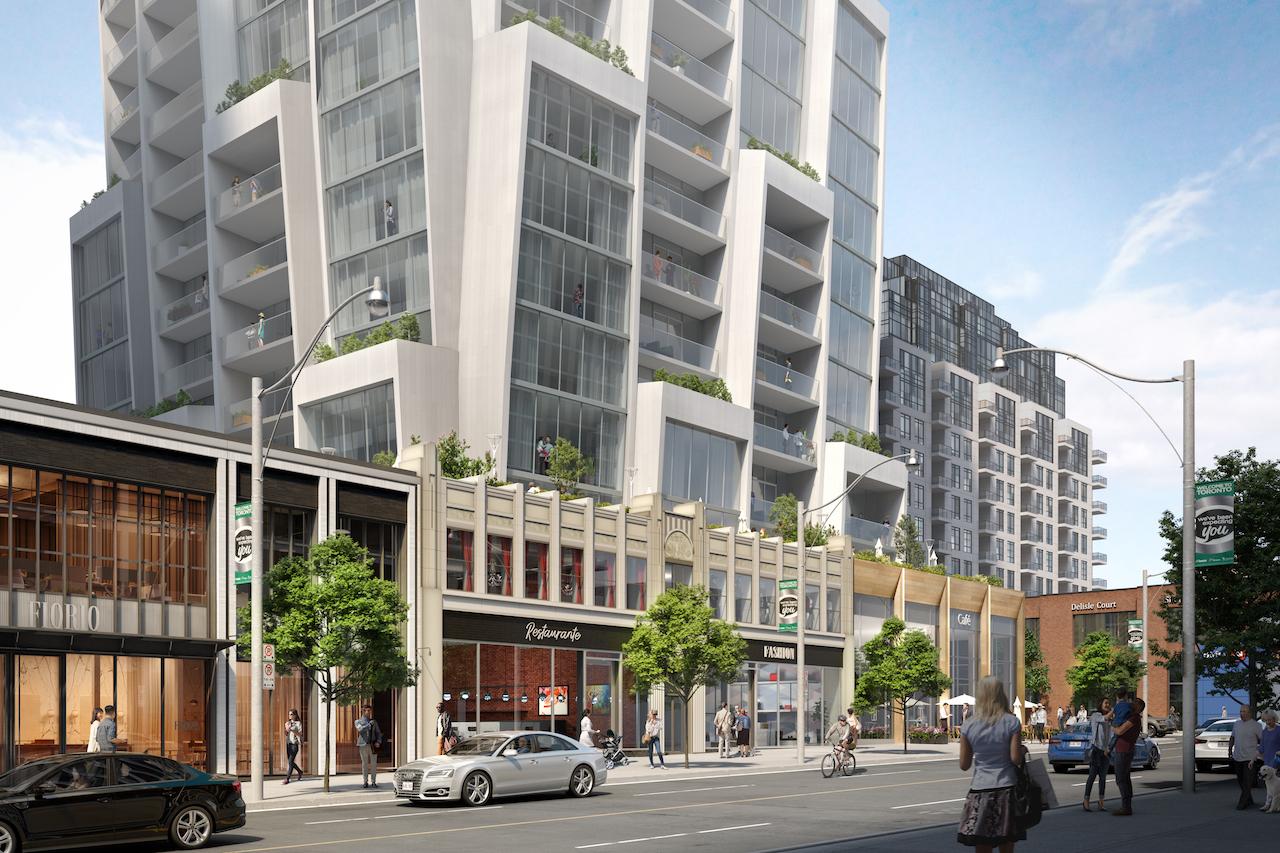 Rendering of the Yonge Street facade, image courtesy of Slate Asset Management.
Rendering of the Yonge Street facade, image courtesy of Slate Asset Management.
The shadow impacts of the tower were also taken into consideration. Gang explained that through formal exercises, their team determined that a circular peak would cast the least amount of shadow on surrounding areas. However, a circular tower would be out of character with the neighbourhood, so they shaped a rectangular base to match the rectangular grid, giving the tower its unique form that morphs from square to circle. Wind effects were also taken into consideration, as the rough texture of the facades helps to break up and minimize gusts.
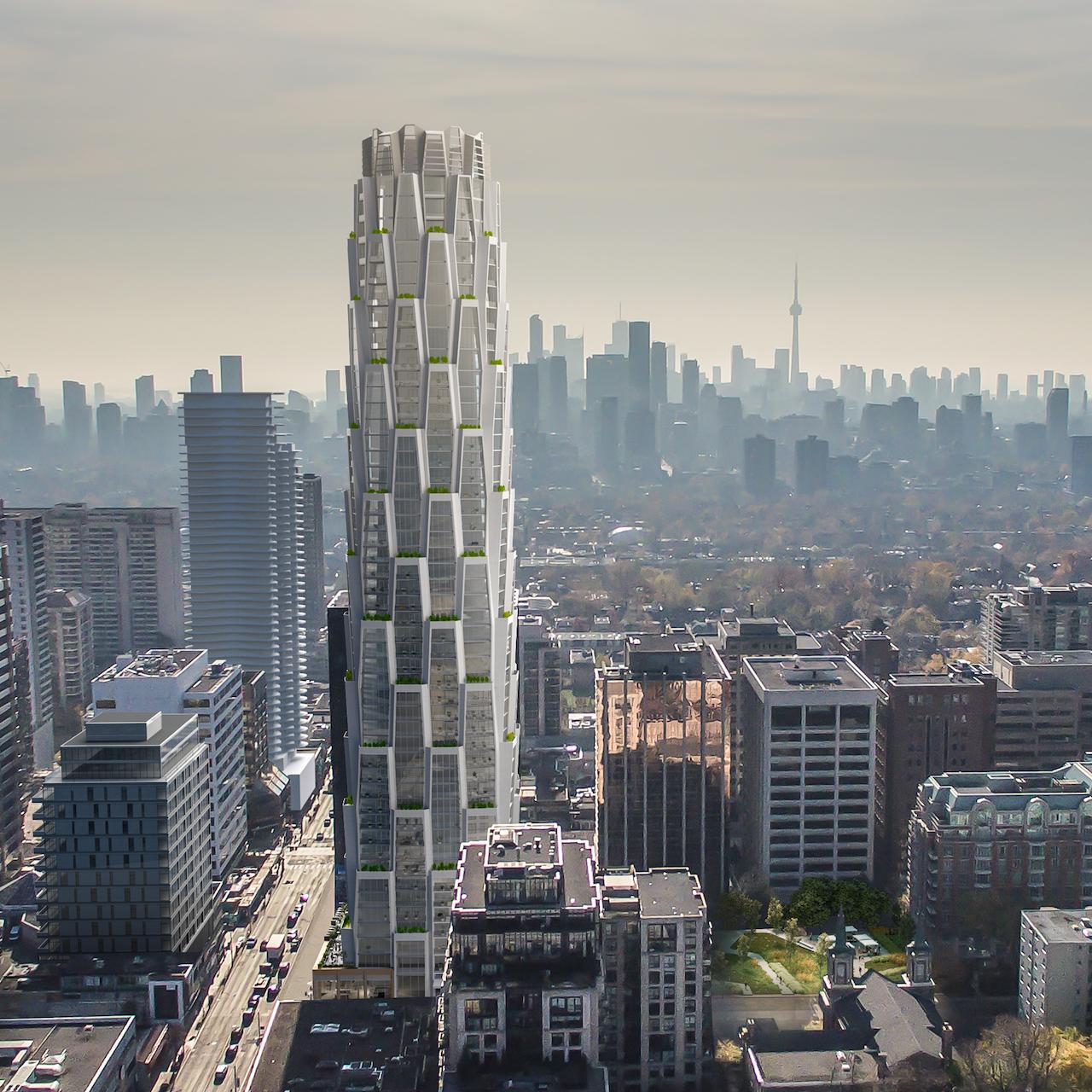 Rendering looking south at One Delisle, image courtesy of Slate Asset Management.
Rendering looking south at One Delisle, image courtesy of Slate Asset Management.
The formal language of the tower's modules were inspired by the local context and lifestyle of Torontonians. "We came up with this idea from the inside out," Gang explains. "We were discovering the ravines and how people use them… There's a real appreciation for the outdoors in Toronto, so we wanted to provide a variety of balconies and porches in the building. It's very connected to the natural environment."
Beginning with the concept of marrying the exterior and interior environments, the modules were carefully shaped to create a diversity of balconies and unit types. As Gang described, some are shallower and some are deeper, creating different conditions that may also lend itself to a diversity of residents. The shape of the modules also gradually changes, with more rectilinear ones near the base transitioning to more pronounced hexagonal ones near the top.
 Close-up rendering of One Delisle, image courtesy of Slate Asset Management.
Close-up rendering of One Delisle, image courtesy of Slate Asset Management.
The modules also help serve another purpose: passive solar heating and cooling. Gang's team is ambitiously pursuing Tier 2 of the Toronto Green Standard, and the tapering of the balconies on each storey helps to create an overhang that minimizes direct sunlight in the summertime and optimizes sunlight exposure in the winter. With solid walls on either side of most balconies, Gang's team is attempting to create comfortable microclimates that can give residents a usable outdoor space year-round. As well, roughly 40-60% of the building's facades will be opaque, allowing for better insulation and a more energy-efficient building. Other aspects such as bird-friendly glazing and renewable energy sources are being explored.
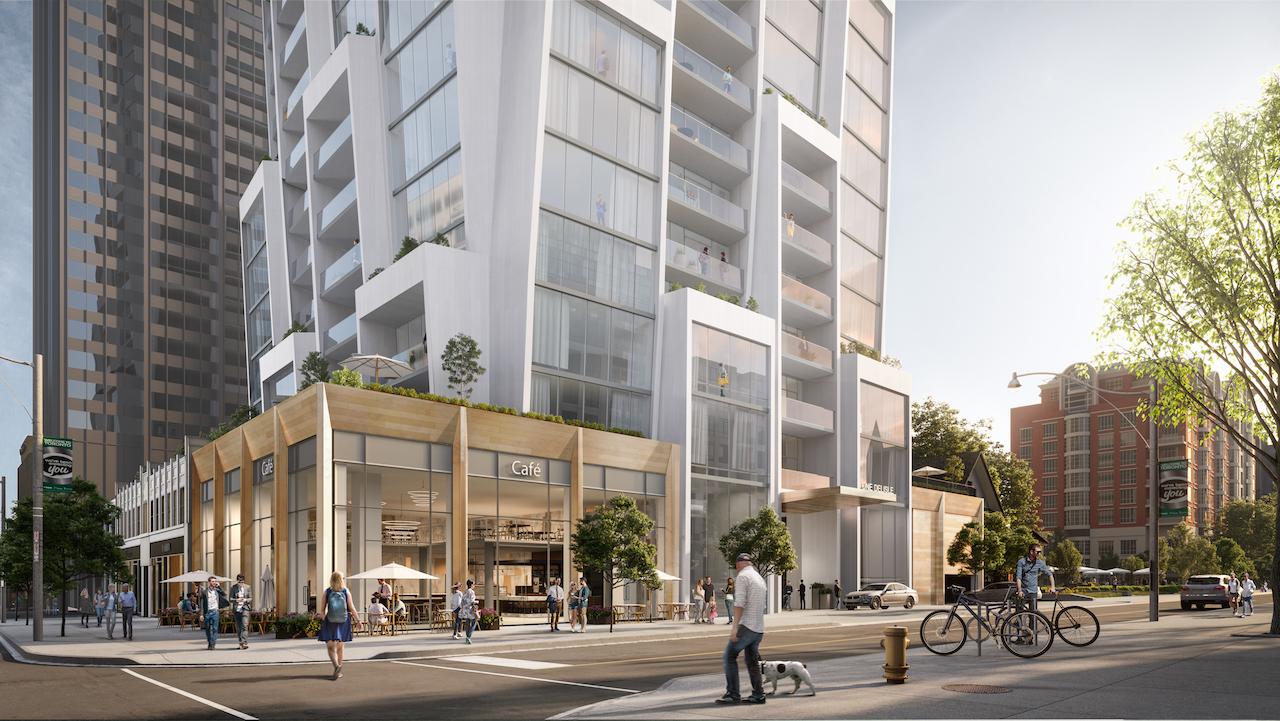 Rendering of the Delisle Avenue facade, image courtesy of Slate Asset Management.
Rendering of the Delisle Avenue facade, image courtesy of Slate Asset Management.
Along with the new building, the Delisle Parkette on the west side of the site will be redesigned and enlarged as part of Slate's larger makeover of the area. The surface parking lot to the east of the parkette will be combined with the existing green space, thereby enlarging it by 50%, and a pedestrian connection will slot between 30 and 40 St. Clair Avenue to the south to provide mid-block pedestrian access to St. Clair. Furthermore, the various underground parking garages of the buildings on this block will be combined and reorganized into one large garage, allowing for the removal of two of the five existing parking entrances and the coordination of underground loading and services. This will help to create a more pedestrian-friendly environment at street level.
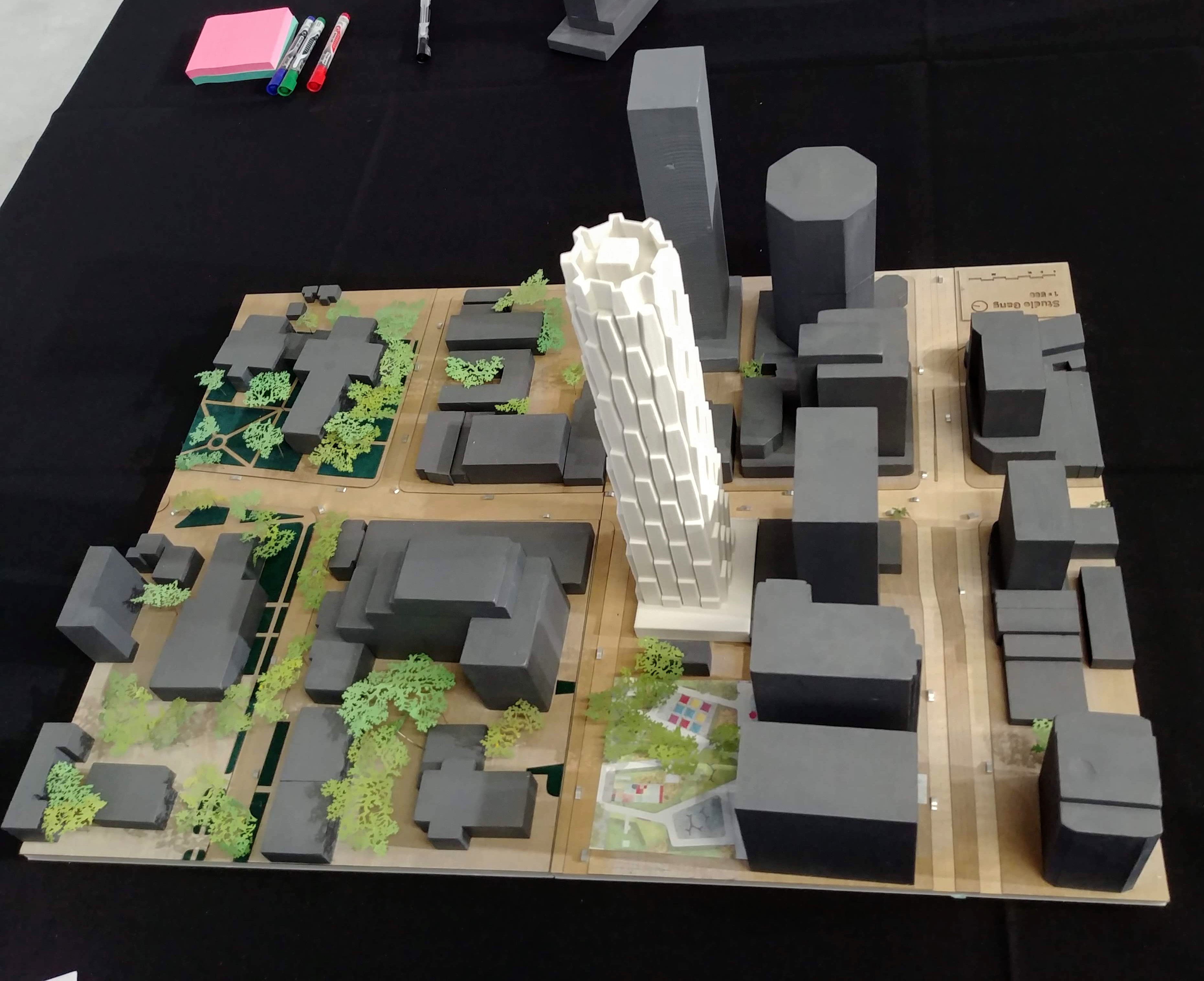 Model of One Delisle and adjacent park, image by Julian Mirabelli.
Model of One Delisle and adjacent park, image by Julian Mirabelli.
Within this grand vision for Yonge and St. Clair, One Delisle promises to be a landmark building that will attract viewpoints from across the city. "Because this neighbourhood in the city is starting to get more tall towers, this will help give it an identity and some excitement," Gang stated. "…Hopefully," she shyly adds with a laugh.
Gang relishes the opportunity to build their first project in Toronto. "It's always very exciting for us to come into a new city and work to understand what the community is interested in," she explained. Her firm is recognized for bringing unique and innovative designs to ordinary programs, and their approach to One Delisle is no exception: "I think we want to do things that can have an impact, whether it's a smaller impact like getting people closer to the environment through a porch, or a bigger impact like defining the next phase of the neighbourhood going forward into the future, and it's hard to do that without being ambitious or optimistic about what's possible."
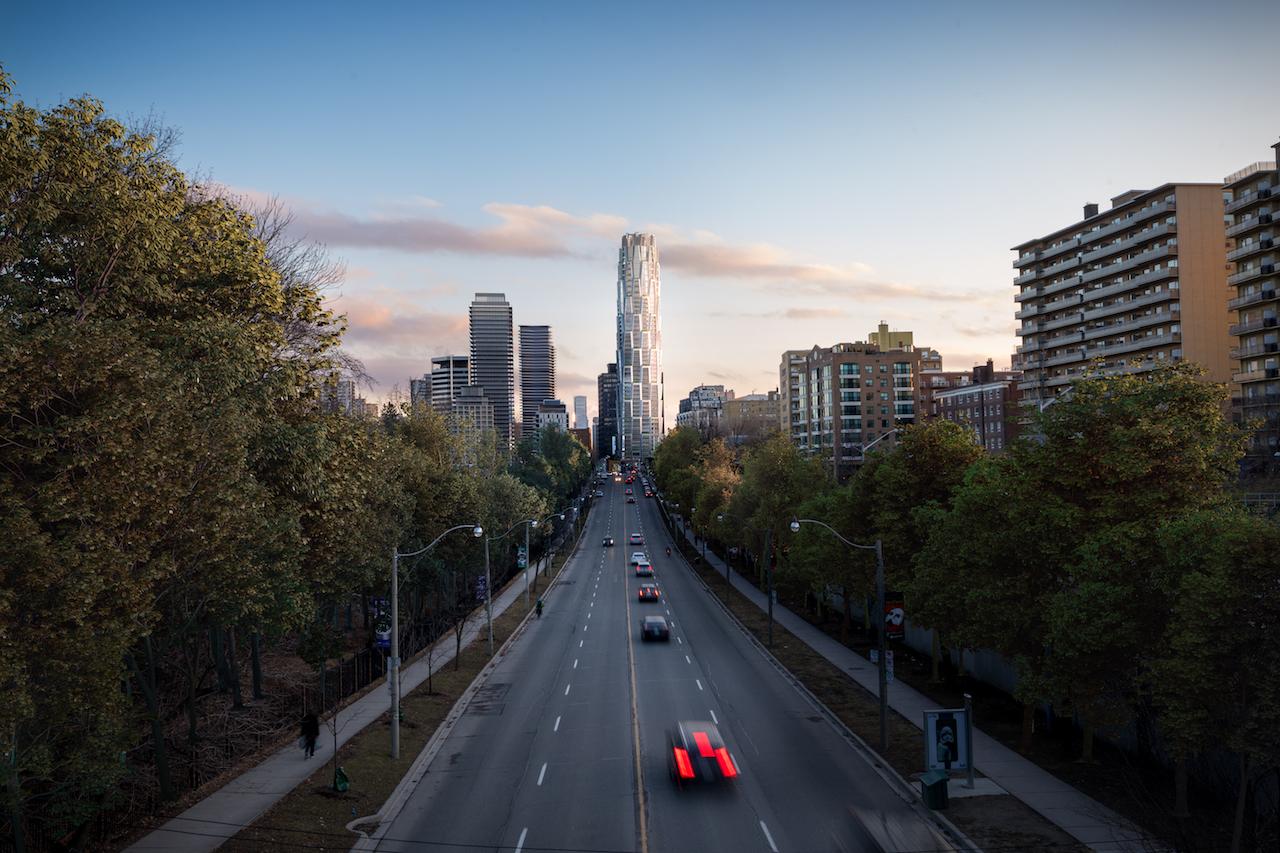 Rendering looking south at One Delisle, image courtesy of Slate Asset Management.
Rendering looking south at One Delisle, image courtesy of Slate Asset Management.
This community consultation was a pre-application meeting, so the building is still in the early stages of design. Slate will be ready to submit their application to the City shortly, but clearly Studio Gang has already made a splash in the Toronto development scene. We will be back with more updates as we eagerly await progress on the building, but in the meantime, you can tell us what you think by checking out the associated Forum thread or by leaving a comment in the space provided on this page.

 9.4K
9.4K 



